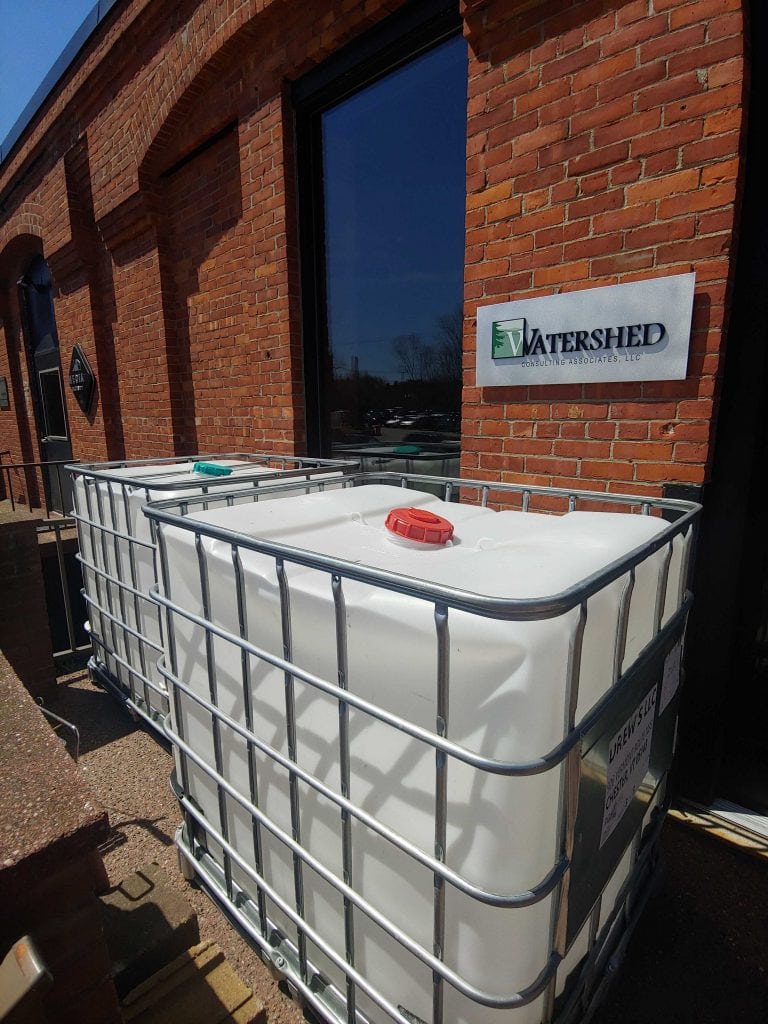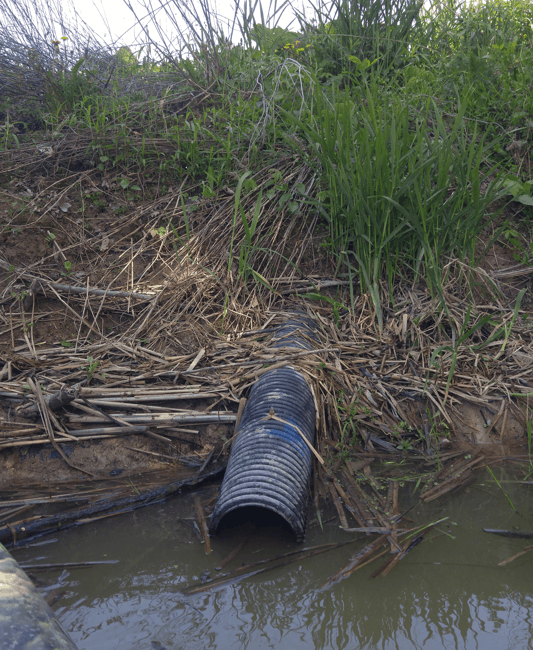The project
On a recent sunny non-rainy day, the Watershed team started field work on a new project. We installed a filter next to a ditch in an agricultural field. The filter looks a bit different than you might expect. It is two large (4 ft by 4 ft) plastic totes. These totes once held vinegar and soy sauce but have found new life filtering agricultural runoff.

The filter material
Students from the University of Vermont tested the ability of several materials to remove phosphorus from water. The selected shale, called St. George Black, worked among the best of the materials tested. The rock’s filtering ability is partly due to the calcium and iron in the stone that attract and bind phosphorus.
The grayish-black shale from a Rock Dust Local-run quarry fills the totes. Water is filtered through the 1/2″ rocks to remove phosphorus before it enters a nearby stream and, eventually, Lake Champlain.



The study site
The fields being studied use subsurface tile drains. This is a common method to remove excess water from soggy crop land. Tile drains provide many benefits, including increased crop yield and reduced soil compaction. However, tile drains can impact water quality by carrying excess nutrients directly to waterways.

Nitrogen has been the main culprit in tile drain systems, but phosphorus is beginning to receive more attention. Previously, phosphorus research focused on surface runoff and erosion. New studies suggest tile drain effluent also carries phosphorus. Furthermore, the form of phosphorus in this water may be more “bioavailable” – meaning it spurs algal growth, making it particularly bad for water quality. For these reasons, we are testing methods to effectively filter the tile drain effluent. If the filters are effective, farmers will be able to maintain their management practices without harming water quality.
The filter
The filters sit at the end of the field, right next to the ditch. Water will be pumped into the filter from the tile drain outflow pipe. The study is focused on low flow conditions when there is likely to be less sediment to clog the filter. Sampling will take place after (and not during) storms.



Water samples will be tested before and after filtration for different forms of phosphorus, including the bioavailable form.
The installation
Filter installation has begun, but wet spring weather has delayed it slightly. Field sampling will begin once they are installed.
Stay tuned for installation updates.
